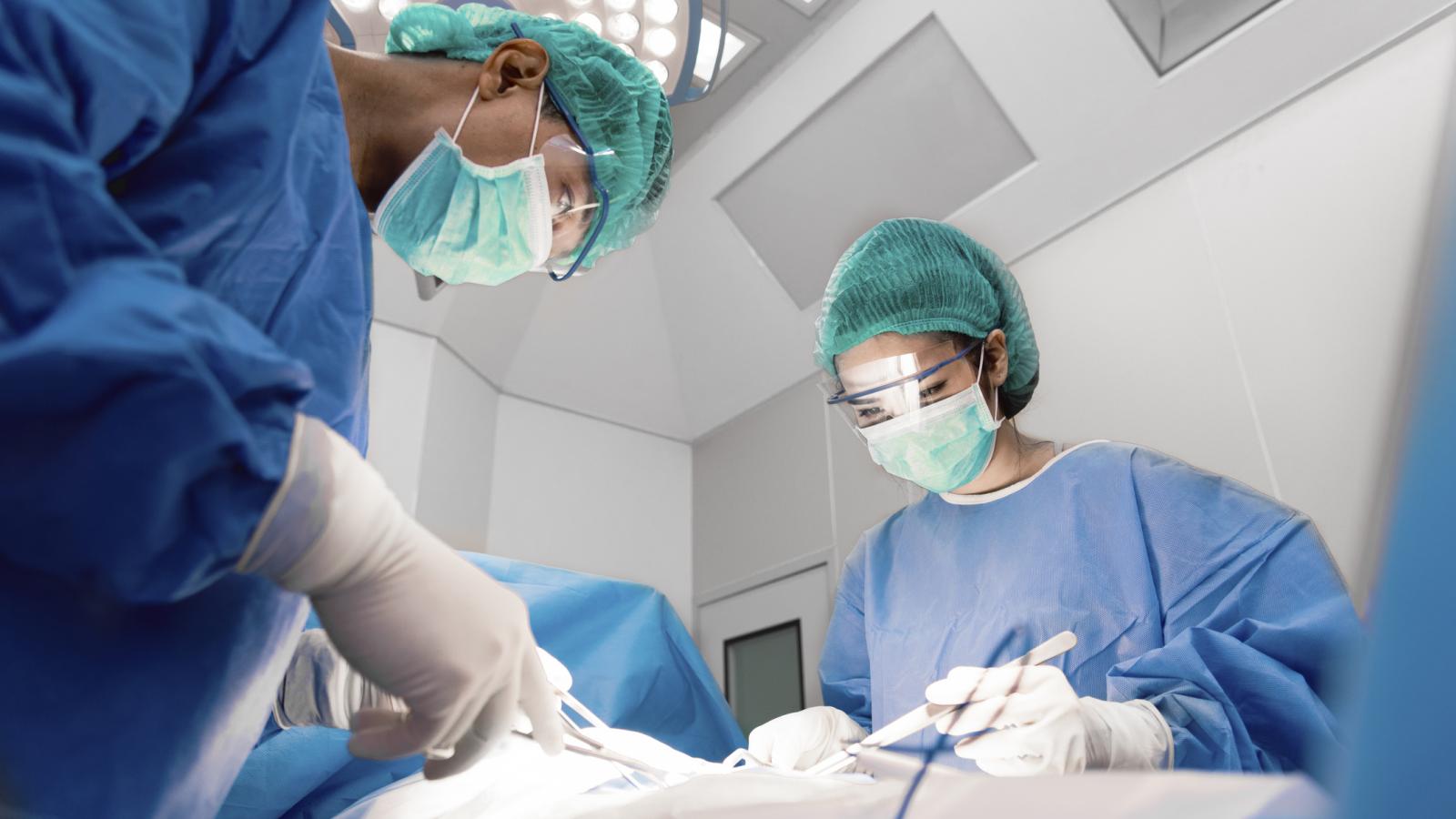Surgery for breast cancer

There are different ways of doing surgery for breast cancer. The best type for you will depend on the stage of your cancer. The main types are:
- Breast-conserving surgery (removing part of the breast)
- Mastectomy (removing the whole breast)
You may also have surgery to remove some or all of your lymph nodes.
Breast-conserving surgery - wide local exision
Wide local exision removes only the breast lump and some normal tissue around it. If the lump is small, you may need to have a fine wire / clip inserted into the breast before surgery. The wire marks the area to be removed. The wire is inserted under local anaesthetic by a radiologist during a mammogram or ultrasound. The wire is removed along with the cancerous area during surgery.
Treatment after surgery
You will need radiotherapy after surgery. This will help to reduce the risk of the cancer coming back in the breast.
Scars
You will have a scar after wide-local exision. The scar may not be directly over the cancer - it depends on where the tumour is and what type of surgery you have. Your surgeon can tell you more about this.
Checking the margins
After surgery, a pathologist examines the tissue removed to see if any cancer cells remain.
- Negative (clear) margins: No cancer cells are found at the edges of the tissue removed.
- Positive margins: There are cancer cells at the edges of the piece of tissue removed.
If you have a positive margin, it may mean that some cancer cells remain after surgery. Your surgeon may need to remove more tissue. This operation is called a re-excision of margins. About 1 in 7 patients will need this operation. It may have to be done more than once.
If your surgeon cannot remove enough breast tissue to get clear margins, you may need to have a mastectomy.
You will need radiotherapy after surgery.

You may be given a choice between breast-conserving surgery and mastectomy. You can discuss this with your surgeon or breast care nurse. You can also contact our cancer nurses if you want to talk about this. Call our Support Line on 1800 200 700 or visit a Daffodil Centre.
Mastectomy
In some cases, the best treatment is to remove the whole breast. This is called a mastectomy.
After a mastectomy, you will be offered a breast prosthesis (breast form) and special bra to wear. Breast reconstruction is surgery that mimics the appearance of a breast. It may be suitable for some patients, either immediately at the time of mastectomy or later on. Read more about breast reconstruction.
Bilateral (double) mastectomy: This is when both breasts are removed. Reconstruction may be possible after having both breasts removed. Your surgeon will discuss this with you.
If you need support before or after surgery, you can talk to our cancer nurses. Visit a Daffodil Centre or call our Support Line on 1800 200 700.
After surgery
- After breast-conserving surgery, your hospital stay will probably be quite short. After a mastectomy or surgery to remove your lymph nodes, your stay could be several days or longer.
- Often you can go home with the drains (wound tubes) in place, if you and your surgical team are happy that you can empty and manage them. They will be removed later by your breast-care or public-health nurse.
- You may have some pain or discomfort for several weeks after surgery. There are many types of effective painkillers. If you have pain at home or in hospital or if your medication isn’t controlling your pain, tell your GP or hospital team so that they can help you.
- A physiotherapist will advise you onarm exercises you need to do to prevent your arm and shoulder joint from getting stiff, before and after the drains (wound tubes) come out. If you have any difficulties with these exercises at home, you can usually contact the physiotherapist or breast care nurse.
- You will probably be advised not to lift or carry anything heavy or drive for a few weeks.
- You may experience different sensations in your breast wound or scar and your armpit. They may feel numb or be extra sensitive to touch.
- After surgery or after the drains (tubes) have been removed, fluid may build up under the wound. This is called a seroma and can feel like a lump. Don’t worry if this happens. Tell your doctor or breast care nurse, who can drain the fluid with a needle, if necessary. It doesnt always need to be drained - sometimes the fluid is gradually reabsorbed into the body.
- You will need to have radiotherapy after breast-conserving surgery. With mastectomy you may or may not need radiotherapy afterwards.
Support after breast surgery
Whether you lose part of your breast or all of it, any change to your body image can be traumatic. Recovering emotionally from breast surgery can take some time.
If you’re finding things difficult or feeling alone, remember that there are people who can help you. Tell your family and friends how you feel so they can support you. You can also talk to your breast care nurse. Counselling might help you too.
It may help to talk to someone who has had similar surgery. Our cancer nurses can put you in touch with a trained volunteer who has been through a similar experience. Call our Support Line on 1800 200 700 or visit a Daffodil Centre and ask about Peer Support or free counselling available remotely or in person at many cancer support centres.
For more information
Phone
1800 200 700




